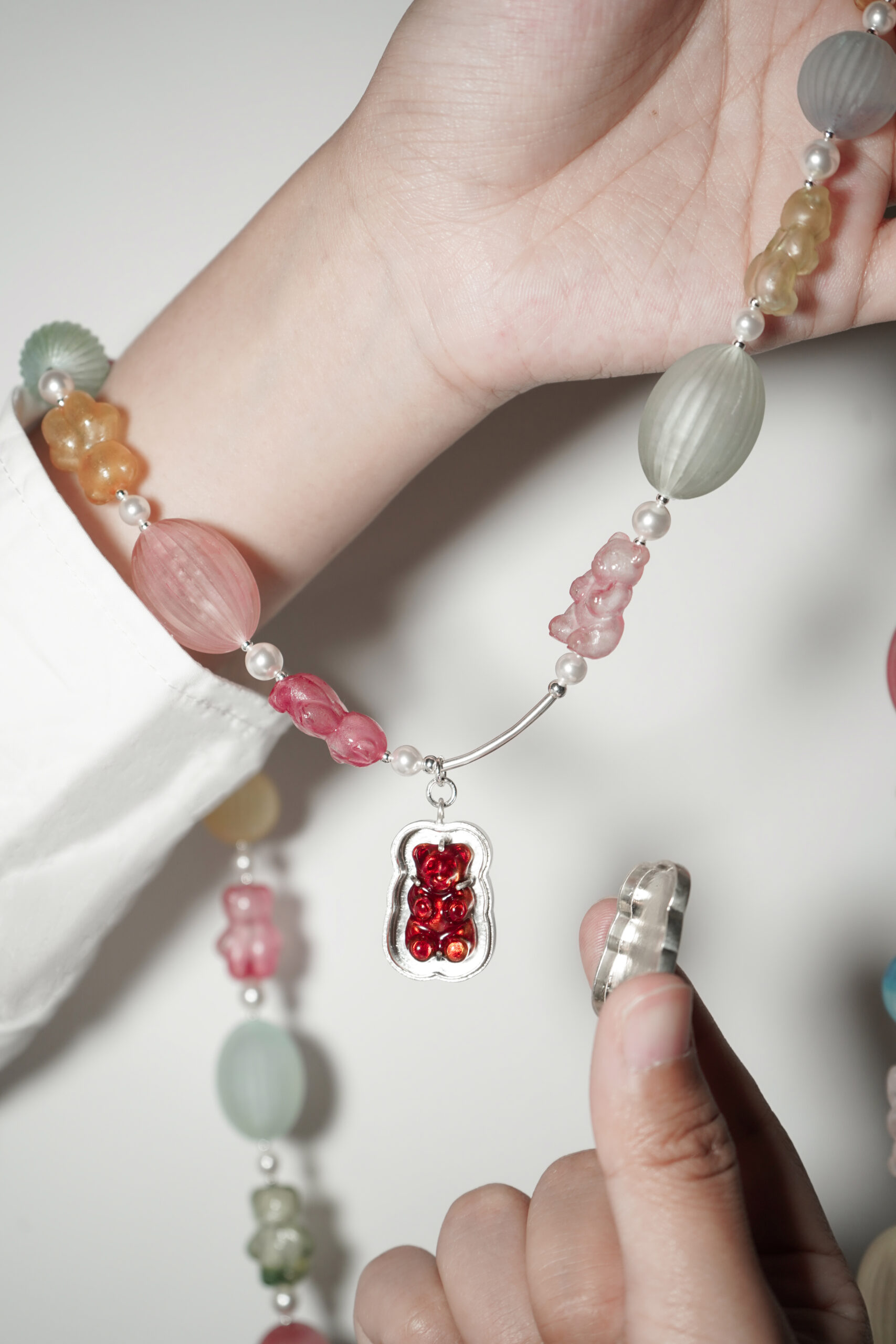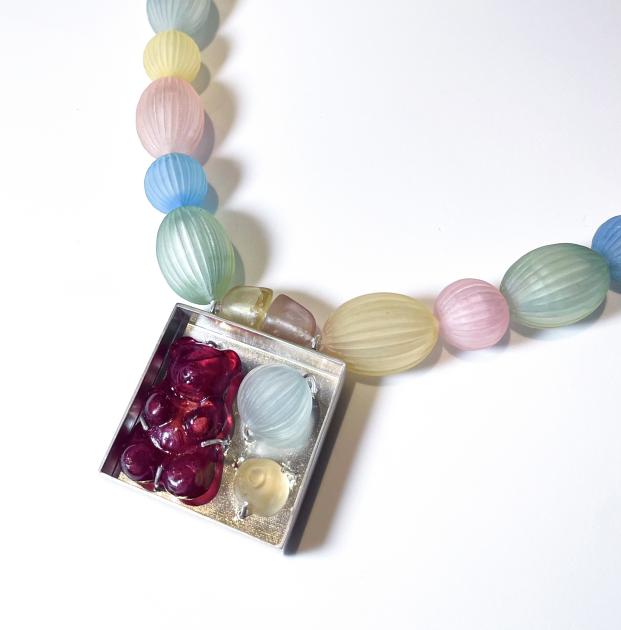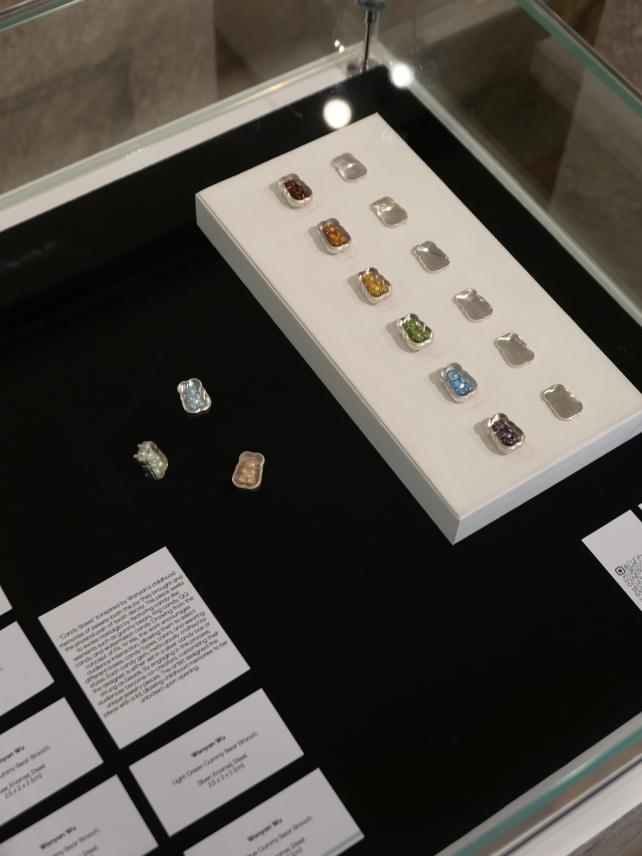In an age of industrial acceleration and nostalgic longing, how can jewellery become a vessel for memory—not merely in the autobiographical sense, but as a shared, sensory language? Can a culturally saturated motif, replicated across generations and geographies, still carry the weight of personal history and poetic tenderness? These questions animate the practice of Wanyan Wu, an emerging narrative jewellery artist whose works explore the convergence of East and West, industry and handcraft, surface and sentiment. Her most recent series, Candy Boxes, exhibited at Unanchored Crafting during London Craft Week 2025, offers a vivid meditation on memory, repetition, and emotional texture. By transforming the fleeting sweetness of childhood candies into durable, wearable forms, Wu constructs jewellery that is at once playful and profound.
Trained at the Birmingham School of Jewellery under the guidance of Bridie Lander and influenced by visiting lecturer Jane Moore, Wu developed an approach that privileges making as a mode of knowing. Her commitment to bold colour and tactile form reflects a methodology grounded in sincere exchange between creator, wearer, and viewer.
Drawing inspiration from Jack Cunningham’s proposition of jewellery as “a medium for telling personal stories,” Wu crafts objects that summon sensory memory through colour, material, and touch. The glossy enamel pinks recall strawberry-flavoured sweets; deep reds hint at cherry; translucent purples conjure grape. Though the enamel and resin she uses are rigid materials, Wu’s soft contours and rounded forms evoke a visual and haptic gentleness; an illusion of softness. In her process, repetition becomes a structural principle. The layered application of UV resin and the repeated firings required to achieve enamel’s glassy sheen mirror the recursive nature of memory itself – ever shifting. Even under identical technical conditions, each piece emerges subtly different, introducing a note of surprise and embracing the unpredictability of material response. For Wu, memory is not a static archive but an experiential phenomenon; fragile, luminous, and always in flux.

The Candy Boxes series offers more than visual delight. It stages an encounter between the physical and the intangible, memory and metaphor. Reminiscent of childhood candy tins, each box becomes a miniature reliquary: a space where recollection is invited and protected. Wearers may open or close the lid, a gesture of access or concealment. Some boxes appear in high-gloss finishes; others are matte and sandblasted – subtle indications of the dual emotional registers we carry: vivid and hazy, sharp and soft. This duality reflects Wu’s wider interest in how memory traverses both individual and collective space. In a globalised world, brands like Haribo have embedded themselves in the emotional landscape of multiple generations and geographies. Wu repurposes these familiar symbols such as gummy bears, ring gummies and even incorporates actual plastic packaging into her work. Her Pick ‘N’ Mix-inspired interactive displays invite viewers to select and assemble their own pieces, mirroring the act of choosing sweets in a shop. In this participatory structure, the boundary between viewer and wearer collapses; jewellery becomes not only seen, but felt and chosen an intimate co-authorship of memory.

Wu’s process navigates between industrial speed and artisanal patience. While digital modelling and 3D printing allow for rapid prototyping and formal refinement, her enamelling and glasswork remain deliberately slow, attuned to the nuanced demands of surface, colour, and form. This oscillation between precision engineering and hand-led intuition forms the rhythm of her practice: fast in conception, slow in material realisation. Her ongoing research extends across geographies. Travelling between the UK and China, Wu engages in the study of cloisonné enamel, repoussé engraving, and lampworked glass, aiming to fuse these traditional techniques with contemporary sensibilities. Her work does not flatten cultural differences into a hybrid aesthetic; instead, it honours their distinct textures, placing them in careful, dynamic dialogue.
Wu’s jewellery resists categorisation. It is neither strictly sculptural nor purely functional, neither nostalgic artefact nor design object. Instead, it occupies a fluid, narrative space – an invitation to remember, to touch, to imagine. Her pieces are not declarations but proposals: soft reminders that sweetness can be both ephemeral and enduring, that emotion can have a form, and that memory, though intangible, can be worn. In this sense, Wu contributes to a redefinition of narrative jewellery not as fixed storytelling, but as sensory archaeology – a recovery of feeling through material. Her practice offers an alternative to the spectacle of contemporary design, favouring instead a slow, embodied engagement with craft, memory, and emotional time.
Through colour, texture, and form, Wu reclaims candy as a site of cultural resonance and emotional complexity. And in doing so, she repositions jewellery not merely as adornment, but as a small, openable space in which the past continues to glimmer.

